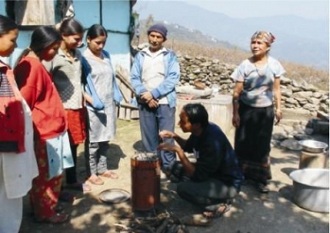Env Sci Technol, Aug 2012
Pollutant Emissions and Energy Efficiency under Controlled Conditions for Household Biomass Cookstoves and Implications for Metrics Useful in Setting International Test Standards
James Jettera, et al.
Realistic metrics and methods for testing household biomass cookstoves are required to develop standards needed by international policy makers, donors, and investors. Application of consistent test practices allows emissions and energy efficiency performance to be benchmarked and enables meaningful comparisons among traditional and advanced stove types. In this study, twenty-two cookstoves burning six fuel types (wood, charcoal, pellets, corn cobs, rice hulls, and plant oil) at two fuel moisture levels were examined under laboratory-controlled operating conditions as outlined in the Water Boiling Test (WBT) protocol, Version 4. Pollutant emissions (carbon dioxide, carbon monoxide, methane, total hydrocarbons, and ultrafine particles) were continuously monitored. Fine particle mass was measured gravimetrically for each WBT phase. Additional measurements included cookstove power, energy efficiency, and fuel use. Emission factors are given on the basis of fuel energy, cooking energy, fuel mass, time, and cooking task or activity. Based on these laboratory-controlled test results and observations, recommendations for developing potentially useful metrics for setting international standards are suggested.



